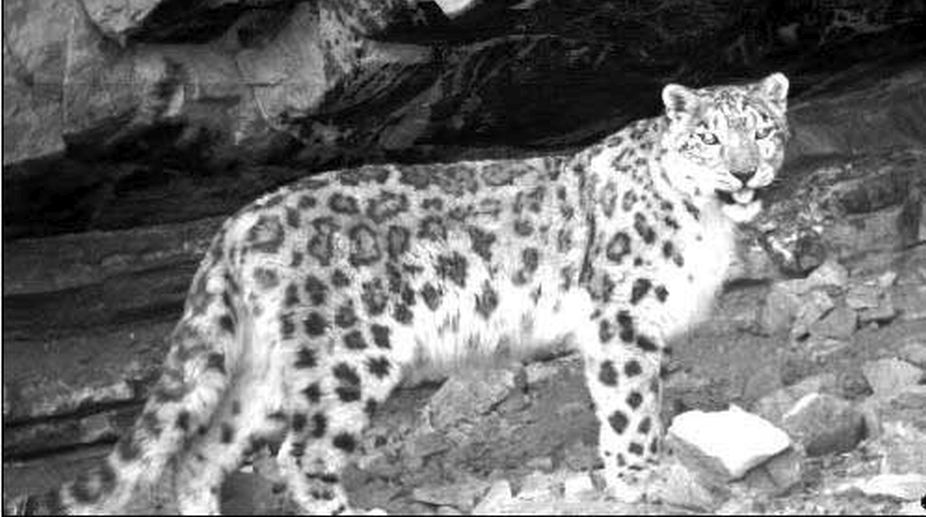Leopard strays into Delhi village, attacks 3 people
The big cat was later rescued by the Forest Department with the help of DFS, while the injured were rushed to the hospital.

Pics of Snow Leopard from Spiti Valley that were caputed by Wildlife department on trap cameras
The elusive snow leopard will get more attention from the Wildlife Department in Himachal Pradesh as more areas where it has been sighted in the past are being included in the conservation camapaign.
The snow leopard, a graceful golden-eyed animal with thick fur, padded paws and a long tail, is found in the rocky regions of the Himalayas at an altitude of 2,700 to 6,000 metres.
The Wildlife Department had earlier started the conservation campaign in association with the Nature Conservation Foundation (NCF) in Spiti valley where there are reportedly 60-70 wildcats as per initial estimates.
There have also been reports snow leopard sightings in the high reaches of Kinnaur district, the Great Himalayan National Park in Kullu district and Pangi, Bharmour areas of Chamba district.
These areas reportedly have a sizeable population of the snow leopard, apart from high reaches of Jammu and Kashmir, Sikkim, Arunachal Pradesh and Uttarakhand.
Advertisement
“The Wildlife department along with NCF would now focus on an extended area for scientific knowledge, research and conservation of these wild cats,” Additional Chief Secretary, Forests Tarun Kapoor told The Statesman.
Officials of the Forest Department said trap cameras would be set up in high altitude areas of Kinnaur, Kullu and Chamba which would help in counting snow leopards.
Officials would also study the conflict of snow leopard with the human population living around their habitation.
The government is already in the process of setting up a Himalayan Snow Leopard Research Centre at Kibber in Spiti to encourage short and long term studies.
The research and training centre for the wild cat’s conservation will have necessary infrastructure for carrying out state-of-the-art research programmes. The studies would also help the experts find out more about its behaviour, reasons for attacking domestic animals and coming closer to human habitations and its natural prey base.
The research of the Wildlife Department is likely to answer important questions on its population, area needed for each animal as per its age and sex, its range in terms of prey availability, topography and disturbance along with their ability to move across human and natural barriers.
Wildlife experts said the Spiti Valley in Lahaul Spiti district of HP has a sizable population of prey species like the Asiatic ibex, a wild goat species, Himalayan blue sheep and the wolf.This points towards a sizable number of the wildcats in the cold desert area of HP.
Snow leopards have been categorised as ‘Vulnerable Species’ by the International Union for Conservation of Nature (IUCN) in 2017 and half of its global population is found in China, India and Nepal. Prior to this, IUCN had listed snow leopards in the category of ‘Endangered Species’.
China has the largest population of snow leopards estimated at 2,000-2,500, followed by India with estimated population of 400-700 and Nepal which has over 300-500 f the elusive wild cat species.
Advertisement